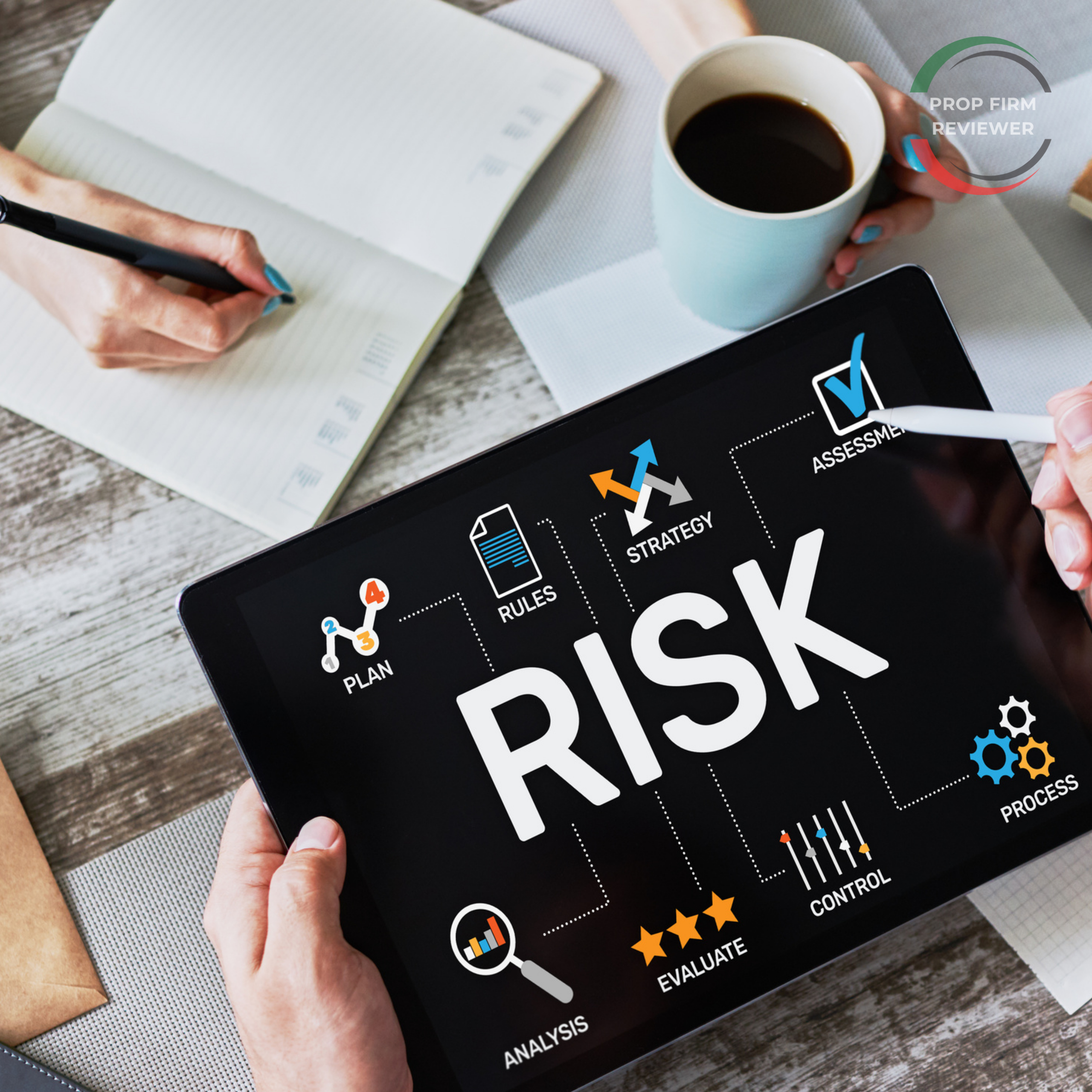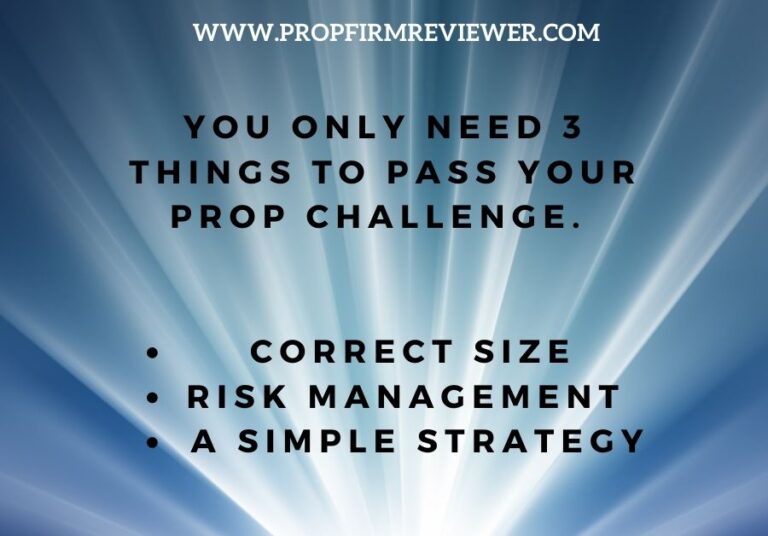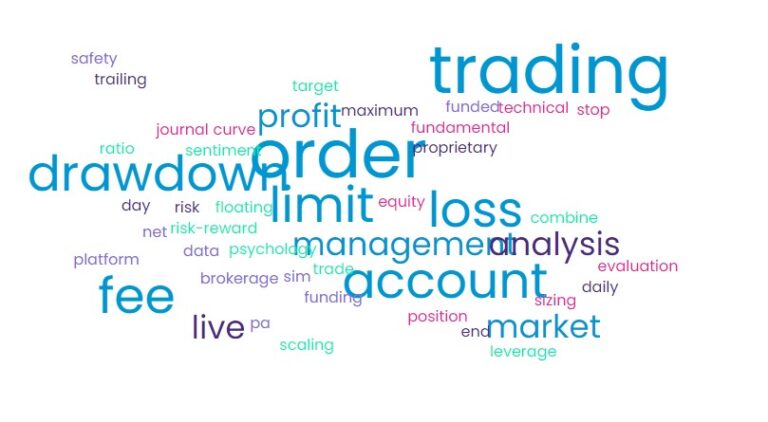Managing Risk for Prop Firm Trading: The Importance of Risk of Ruin

Trading with Prop Firms requires effective risk management strategies to ensure sustainable profitability. Many traders have experienced significant losses or blown trading accounts due to poor risk management. However, by understanding and calculating the risk of ruin, traders can prevent account depletion and establish a disciplined approach to trading. This article explores the concept of risk of ruin and its significance in long-term trading, providing practical steps to assess and manage risk effectively.
The Significance of Knowing Your Risk of Ruin
Trading in financial markets can be a high-risk endeavor, and without proper risk management, traders are susceptible to significant losses or even blowing their entire trading accounts. This is why understanding and calculating the risk of ruin is of utmost importance for long-term traders. The risk of ruin is a statistical concept that quantifies the probability of an account balance reaching zero or experiencing a major drawdown.
 Many traders, regardless of their experience or skill level, have encountered situations where they lost a significant portion of their trading capital or even wiped out their accounts entirely. These experiences can be disheartening and may discourage traders from continuing their trading journey. However, it is important to note that such losses are not uncommon in the world of trading and are often attributed to inadequate risk management strategies.
Many traders, regardless of their experience or skill level, have encountered situations where they lost a significant portion of their trading capital or even wiped out their accounts entirely. These experiences can be disheartening and may discourage traders from continuing their trading journey. However, it is important to note that such losses are not uncommon in the world of trading and are often attributed to inadequate risk management strategies.
The risk of ruin serves as a reminder that trading should not be approached as a gambling activity or a quick path to financial success. It requires a disciplined and responsible mindset. Treating the market like a slot machine, where luck determines outcomes, is a surefire way to lose money consistently. Traders need to understand that long-term success in trading comes from managing risk effectively and making informed decisions based on solid strategies.
By calculating and understanding their risk of ruin, traders can make more informed decisions about their trading strategies and risk tolerance. It allows them to evaluate the potential impact of their trading decisions on their account balance and take necessary precautions to prevent excessive drawdowns. The risk of ruin acts as a risk management tool, guiding traders to allocate their capital wisely and avoid unnecessary risks.
Knowing the risk of ruin encourages traders to approach their trades more responsibly, keeping risk in mind with every decision. Instead of chasing instant profits or trying to relieve immediate financial burdens, traders can adopt a long-term perspective and focus on sustainable profitability. This mindset shift enables them to make trading decisions based on sound analysis and risk-reward considerations rather than impulsive actions driven by emotions.
Calculating Your Risk of Ruin
A. Setting Risk Percentage: Determining the appropriate risk percentage per trade is a crucial step in managing risk effectively. It is recommended that traders establish a maximum risk percentage, often around 2% of their account balance per trade. As the trading account grows, scaling down the risk percentage is advisable. By allocating a smaller percentage per trade, traders can withstand a larger number of consecutive losses before depleting their account balance. This approach provides a buffer against losing streaks and helps preserve the trading capital.
B. Establishing a Consistent Trading Strategy: Consistency is key to successful trading. Traders should define a trading strategy with clear rules and follow them diligently for each trade. Having well-defined entry and exit criteria, risk management guidelines, and trade management rules allows for objective decision-making and reduces the likelihood of impulsive and emotional trading. While it is essential to be open to improving the strategy, any modifications should be implemented systematically and based on careful analysis rather than arbitrary changes.
C. Determining Profitability (Profit Factor): Evaluating the profitability of a trading strategy is crucial in assessing the risk of ruin. Traders can determine profitability using different methods. One approach is to establish a fixed risk/reward ratio for each trade, such as 2:1, where the potential reward is twice the risk. Another method is to calculate the average win ratio by summing the profits from winning trades and dividing it by the total number of trades. These profitability measures provide insights into the strategy’s ability to generate profits and manage risk effectively. 
D. Defining Acceptable Maximum Drawdown: The maximum drawdown refers to the percentage of total account loss from the peak of profitability to the lowest point during a trading period. Traders need to determine their acceptable level of maximum drawdown based on their risk tolerance. A useful approach is to consider the amount of money that, if lost, would cause significant distress or frustration, and then reduce it by half. Setting the maximum drawdown between 10% and 25% is a common range, but it can be adjusted based on individual preferences and risk appetite.
E. Logging Trades and Monitoring Win Percentage: Maintaining a trading journal is essential for calculating and understanding the risk of ruin. Traders should record every trade, including entry and exit points, risk percentage, profit/loss, and other relevant information. This data allows for an accurate assessment of the trading strategy’s win percentage and average profit/loss. Journaling trades not only helps in risk of ruin calculations but also enables traders to analyze their performance, identify strengths and weaknesses, and make informed adjustments to their strategies.
Using a Risk of Ruin Calculator
To simplify the risk of ruin calculation process, traders can utilize a risk of ruin calculator. This tool requires inputting specific data, such as win rate, average profit/loss, risk per trade percentage, number of trades, and maximum drawdown percentage. The calculator then calculates the probability of reaching the risk of ruin based on the provided data. A lower risk of ruin percentage indicates better risk management and a more sustainable trading strategy. Traders can experiment with different scenarios and adjust their risk management parameters to find the balance that suits their trading style and risk tolerance.
Here’s a free Risk of Ruin Calculator to help you in sizing your trades to lower the probability of blowing your account.
Understanding and calculating the risk of ruin is fundamental for long-term trading success. By setting appropriate risk percentages, maintaining consistency in trading strategies, evaluating profitability, defining acceptable maximum drawdowns, and tracking trades in a journal, traders can effectively manage risk and optimize their trading approach. The risk of ruin calculator serves as a valuable tool for quantifying the probability of reaching the risk of ruin and guiding traders in making informed decisions. By incorporating risk of ruin analysis into their trading practices, traders can enhance their risk management strategies, protect their trading capital, and increase their chances of achieving sustainable profitability in the long term.
Now that you understand the Risk of Ruin, you’re prepared to tackle a prop firm challenge! Head over to our Prop Firm Quick Guide to choose the prop firm that’s right for you. Looking for lowest cost of entry? We have coupon codes and deals for you here. Looking for the best Prop Firm for beginners? We highlight the firms with the best educational content here.
If you’re looking for information about Forex Trading, check out our other site, Learn to Day Trade Forex, for more in-depth prop firm reviews, articles and educational resources.






